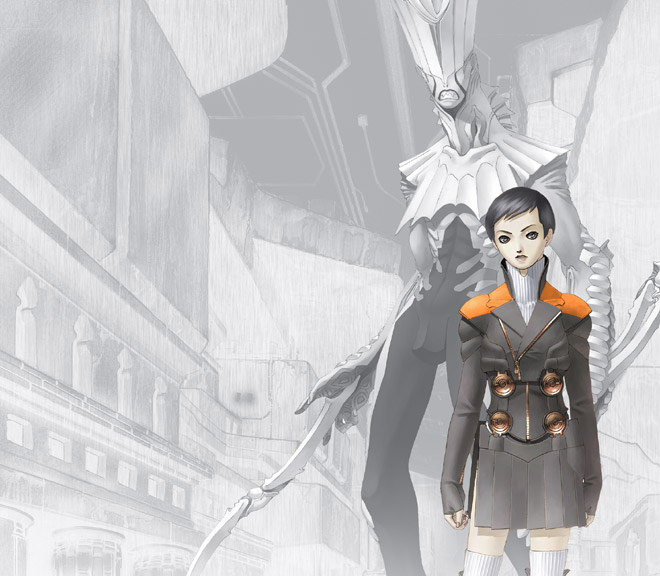
Outside of the Persona games, Digital Devil Saga [1] is my only exposure to Atlus' larger Shin Megami Tensei series. And Digital Devil Saga is so many things at once that it's overwhelming: a religious allegory, a challenging turn-based RPG, and a post-apocalyptic (maybe?) survival tale. It was a joy to revisit for the podcast.
Frustratingly for me, Digital Devil Saga asks more questions than it answers. What is the Junkyard? What are the hidden past lives of the main characters? Who is Sera and why is she affecting the Junkyard's denizens this way? What happened to Serph after the final battle? Digital Devil Saga builds these mysteries brilliantly and I'm eager (and a little scared) to find out their resolutions in the sequel. The storytelling and pacing in DDS1 is excellent in general.
...But not without one serious caveat. The battles are challenging on their own, but the challenge level is artificially inflated by a brutal random encounter rate. The maze-like dungeons are interesting and well-made, but there's that encounter rate again. Interesting gameplay systems like Hunt skills and Mantra classes are made more frustrating by a random encounter rate that's too damn high. I strongly recommend that fans of PS2-era RPGs give Digital Devil Saga a shot, but be aware that these battles and dungeons are often too frustrating for one unfortunate reason.

Digital Devil Saga needs a remake.
These words rang through my head as I journeyed through the apocalyptic Junkyard. The older Shin Megami Tensei titles have never been quite as user-friendly as the more recent Persona titles, although Digital Devil Saga serves as an interesting transition between the modern titles and Shin Megami Tensei: Nocturne's blistering difficulty. It's a slow burn, with a high random encounter rate and demanding combat, which asks a lot of its players.
Yet the challenge is well worth it. Rarely have I seen a game that tackles such daring material, or is willing to take such a risky approach in its storytelling. Presenting such a dreary environment inhabited by robotic, unfeeling characters who gradually open up and act out upon experiencing their first emotions is a fantastic storytelling device that pays off in a big way when the cast finally begins to regain their humanity. I fear that many players may be turned off by the sluggish opening to really appreciate what Digital Devil Saga has to offer (although they would be hard pressed to deny that the opening cutscene is dope).
Add in a fast forward button, some high-definition polish, maybe a way to reduce the encounter rate and an option to equip multiple Mantras, and slap these babies on the PS4. I'd buy it in a heartbeat and resume rending, slaughtering, and devouring my enemies with glee.

As I write these Final Thoughts™, I find myself having a great deal of difficulty trying to succinctly sum up Digital Devil Saga. There's just so much to say about it that I almost don't know where to begin.
Shin Megami Tensei has always been daring, but Digital Devil Saga feels especially so. It asks the same questions of blind faith as its parent series, but presented within an existential mystery: The Junkyard is a cyberpunk wasteland of concrete, steel, and religious iconography. Why is it wrought by endless rain? Why does it serve as a stage for endless conflict? Why... are you there?
As the player asks these questions, so too does the cast. Digital Devil Saga bases its mystery around protagonists who were previously conditioned automata as they gain consciousness and begin to feel emotion for the first time. It's a fantastic way to put the audience on the same page as the heroes, without defaulting to that worn-out JRPG cliché of amnesia. The riddle of The Junkyard's existence only becomes more compelling when seemingly out-of-place locations become introduced; a cruise liner, a military hospital, an amusement park castle. It's a smart way to propel the narrative forward; the dungeons become more recognizable as if Serph and the Embryon are approaching humanity, yet they are kept at arm's length by their cruel, cannibalistic hunger.
Digital Devil Saga is a fantastic title that makes effective use of the Wheel of Samsara to craft a nightmarish examination of consciousness, humanity, and mortality. Admittedly it gets bogged down by lengthy dungeons as well as an encounter rate that is far too high, but these foibles don't deny it its rightful status as one of the finest RPGs the PS2 has to offer.
Just don't buy it on PSN. Yikes.